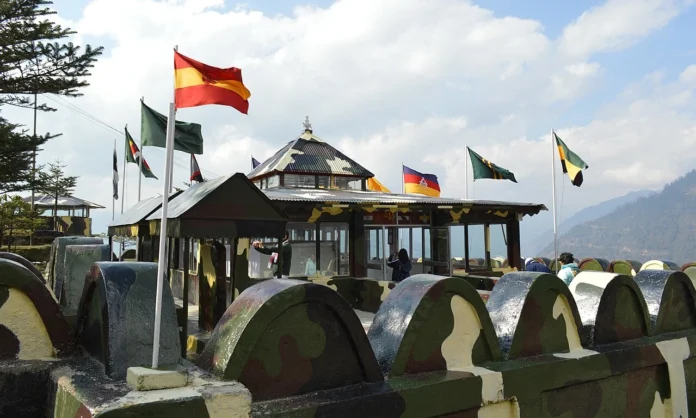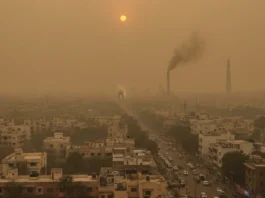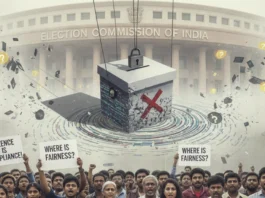The newly carved small hill state of Uttarakhand has two divisions—the western half of the state is the Garhwal Division, while the eastern half is the Kumaon Division. The Garhwal Region lies approximately halfway along the vast Himalayan Range. Uttarakhand is the ‘Abode of the Gods,’ Warriors, Craftsmen, and Artists. This region is home to the four most pious Dhams (shrines) of the Hindus: Yamnotri, Gangotri, Kedarnath, and Badrinath. Both divisions have the unique significance of having distinguished Infantry Regiments, namely ‘The Garhwal Rifles’ (Garh Rif) and ‘The Kumaon Regiment.’ These two illustrious regiments of the Indian Army have carved a niche for themselves both at home and abroad during war and peace.
While ‘Garh’ means ‘a Fort’ and ‘wal’ is synonymous with ‘the place,’ Garhwal, therefore, truly signifies ‘country of forts.’ Nearly every prominent mountain peak in the Garhwal division boasts the crumbling remnants of an ancient fortress. The military cantonment of Lansdowne, for example, has the ruins of the fort of Kalungarhi on its culminating point, 6200 feet above MSL
The origin of ‘The Garhwal Rifles’
In April 1887 the 2nd Battalion, the 3rd (The Kumaon) Gurkha Rifles, with six companies of the Garhwalis and two companies of Gurkhas, was raised in Almora. While the title of Kumaon was dropped in August 1887, it was an adequate reflection of the camaraderie among the Gurkhas, Garhwalis, and Kumaonis. The 1st Battalion was raised under Lt. Col. EP Mainwaring on May 5, 1887, at Almora. In 1891, the two Gurkha companies were reverted to Queen Alexandra’s Own Gurkha Regiment, and the remaining 39 Royal Garhwal Rifles were renamed as part of the old British India Army and got their present name after Indian independence. It served during the Frontier campaigns of the late 19th and early 20th centuries, as well as in both the World Wars. After independence, it has served with distinction in all the wars that India has fought, including the insurgencies in Nagaland, Mizoram, Jammu & Kashmir, and Punjab. Presently there are nineteen regular infantry battalions from 2nd to 19th and the Garhwal Scouts, who are permanently located at Joshimath protecting the Chinese threat from the Tibet front, three Rashtriya Rifles (RR) Battalions and two Territorial Army (TA) The 1st Battalion was converted as 6 Mechanised Infantry as an integral part of the Mechanised Infantry Regiment. Jai Badri Vishal is the war cry of the Garwhalis.
Garhwalis have the distinction of winning hundreds of gallantry awards and battle honours in their checkered history, including the three Victoria Crosses (VCs) in pre-independence. Naik Darwan Singh Negi won the first VC in Festubert in France in 1914. Rifleman Gabbar Singh was decorated with the second VC in Neuve Chapelle, again in France, while the third VC was awarded to Lt. WD Kenny posthumously in Waziristan in 1920. To honour the martyrs in World War I, the War Memorial at Lansdowne was unveiled on a suitable vantage point on Armistice Day, November 11, 1923, by Lord Rawlinson of Trent, the then Commander-in-Chief of India. It is located overlooking the Parade Ground and is one of the major attractions in Lansdowne. The regiment demonstrated exceptional service during World War II, garnering numerous gallantry awards and battle honours. In the post-independence era, the Garhwalis have won numerous gallantry awards and honours notably one Ashok Chakra (Naik Bhawani Datt Joshi in Operation Blue Star in June 1984 in Amritsar posthumously) and four Maha Vir Chakras (MVCs) as under:
- Lieutenant-Colonel Kaman Singh, Indo-Pak War 1948.
- Lieutenant-Colonel B.M. Bhattacharya, Sino-Indian War, 1962.
- Rifleman Jaswant Singh Rawat (posthumous), Sino-Indian War, 1962.
- Captain Chandranarayan Singh, Indo-Pak War, 1965.
The bravery of the Bhulas (Garhwali soldiers called affectionately, meaning younger brothers) is sung as folklore in the entire Uttarakhand. Every Uttarakhand home has made a direct or indirect contribution to the Indian Armed Forces. The regiment has 32 battle honours so far to its credit. 3 Garhwal Rifles has the distinction of winning 1 MVC, 18 Vir Chakras (Vr Cs), 1 Shaurya Chakra (SC), and 19 mentions in dispatches (M in Ds) in a single operation in the Tithwal Sector during the 1947–48 War with Pakistan.
Saga of 4 Garhwal Rifles in 1962 Sino-Indian War
The incredible saga of 4 Garhwal Rifles (Nuranang) during the 1962 War in Se La (Pass) is unparalleled in our military traditions and history. The Battalion was deployed in the Tawang-Se La Jung Sector in the erstwhile North Eastern Frontier Agency (NEFA) under the command of Lt Col (later Maj Gen) BM Bhattacharya. The battalion repelled three Chinese attacks on 17 November 1962, resulting in heavy casualties for the enemy. While under orders to withdraw from Tawang, the battalion captured one Chinese medium machine gun (MMG) post, a prisoner of war (POW), and several Chinese weapons.
One company of this battalion was holding the defence of Nuranang Bridge. The Chinese, with heavy mortar and heavy artillery bombardment and MMG fire, commenced their attack. Rifleman Jaswant Singh, along with Trilok Singh and Gopal Singh, volunteered to crawl up to the enemy MMG post and destroy it. Against all odds with savage raw Garhwali courage, Jaswant crawled up to the Chinese bunker and jumped into the MMG pit. Out of the three Chinese soldiers, two had died due to
grenade blasts by these daredevils, while the third was wounded and became a POW, but he managed to fire straight at Jaswant. The bullet hit him in the head, and Jaswant sacrificed his life, saving enormous casualties for his company. The captured Chinese MMG was later sent to the Brigade Headquarters (HQ). Both the Commanding Officer and Jaswant were decorated with the MVC. Besides, a number of VrCs and other gallantry awards were bestowed upon the battalion, including the battle honour “NURANANG.”
A Myth: From a Rifleman to Baba of Jaswant Garh
This was the incredible story of the late Rifleman Jaswant Singh Rawat of 4 Garhwal Rifles (4 Garh Rif), MVC, in the 1962 War in Sela (Tawang) in Arunachal Pradesh. But for the acts of bravery in Rezangla in Ladakh (13 Kumaon), Walong (6 Kumaon), and Sela (4 Garh Rif), both in the NEFA, now called Arunachal Pradesh, there is nothing one would like to ever remember about the shameful rout of the Indian Army. We all, the citizens and soldiers of the Indian Army, wish it remains as a one-time aberration in our otherwise illustrious military history. Locals say that Rawat’s indomitable Garhwali courage held the enemy for three days. Despite being bruised and having nothing to defend, he fiercely charged at the enemy MMG in a final act of desperation, like a cornered wounded tiger. But while returning, he was fatally wounded on his head by the devastating enemy fire and martyred holding the captured Chinese gun in his hands. The country honored the brave-hearted late rifleman Jaswant Singh with the second-highest gallantry award, the Maha Vir Chakra (MVC).

On the serpentine road winding onto the cold, misty Himalayas towards Se La 4 Garh Rif, they erected a ‘Mandir cum Memorial’ for their fallen legend, Jaswant Singh Rawat, MVC, appropriately named ‘Jaswant Garh.’ The memorial has a garlanded bronze bust of braveheart Garhwali Bhula Jaswant Singh, along with his portrait and belongings, including the army uniform, cap, watch, and belt. Many stories have been created about this Immortal Mortal, but this description reveals only the truth of what actually occurred during that bloody night of savage hand-to-hand combat. The Jaswant Garh Memorial now houses the bust. A unit posted around this area proudly maintains the memorial and runs a canteen to serve weary passengers with steaming tea, hot pakoras, and samosas.
No one passes through Jaswant Garh without paying obeisance to this IMMORTAL MORTAL. The spirit of this great son of Garhwal stands tall to remind our countrymen of the great sacrifices made by the soldiers of the Indian Army. Numerous stories have now been associated with both Jaswant and Jaswant Garh. The local lore goes that Rifleman Jaswant Singh Rawat never died and wanders and protects these lonesome hills as mystic Baba Jaswant Singh. His spirit, wearing his army fatigues and balaclava (woolen headgear), still guards the bridge he defended. He is the local guardian diety for the troops deployed in this area. All defence personnel traveling on this treacherous lonely road stop to pay their homage to this legend at Jaswant Garh, failing which, the myth goes, a deadly curse falls on the victim. Many vehicles overturn and experience serious accidents around Jaswant Garh if their drivers fail to pay homage. Nobody, therefore, likes to challenge this myth because when it comes to spirits of the invisible martyrs guarding the loneliness of treacherous passes in the misty snow peaks, tough sand dunes in the heat of the desert, vastness of the sky above, or roaring waves in the oceans, men in uniform like me always become highly superstitious of these supernatural miracles. It is said that the spirit of Jaswant, now revered as ‘Mystic Baba,’ does not let any troops deployed in this sector ever slacken. May his indomitable tribe continue to grow and thrive!
Writing about the courage of the 4 Garhwal Rifles, both Lt Gen BM Kaul, the General Officer Commanding (GOC) 4 Corps Commander, and Brigadier John Parashuram Dalvi, Commander of the 7 Infantry Brigade, had said:
“Had everyone fought as the 4 Garhwal rifles did, the history of the NEFA would have been different.”






